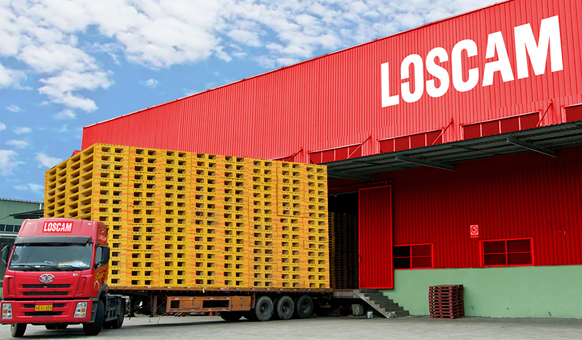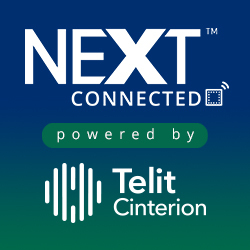Loscam uses Thinxtra Sigfox technology to track packaging
- May 5, 2020
- imc

Loscam is using Sigfox technology from Australian operator Thinxtra to enable track and trace for its returnable packaging assets.
After a decade of trialling expensive, complex and incomplete asset management systems, Loscam implemented Thinxtra IoT-enabled track and trace. This helps Loscam’s customers make fact-based decisions to improve supply chain operations using Thinxtra’s scalable, cost-effective, end-to-end IoT-enabled track and trace.
Founded in 1942, Hong Kong-based Loscam supports retail and manufacturing supply chains with leasable pallet and returnable packaging. The company is Asia-Pacific’s largest pallet pooling and returnable packaging company, with over 100 depots operating across the region, serving thousands of customers.
Under Loscam’s business model, customers pay a daily hire rate for returnable packaging assets to move inventory via a third-party logistics provider between manufacture and retail. Customers are required to pay a daily compensation rate to cover replacement of missing assets.
“A key pitfall in our environment is that we can’t easily track assets leased to customers,” said Daniel Bunnett, Loscam executive vice-president. “When assets go missing, customers often resist paying compensation because they feel they’ve already paid for the asset by hiring it. The challenges for us of not tracking assets were unhappy customers, lost compensation fees and replacement costs.”
Loscam needed cost-effective, end-to-end asset tracking. Ten years ago the company trialled its first track-and-trace option with a 3G GPS tracker that had less than seven days battery life. The trial allowed the customer to track stillage units, but the costs were prohibitive for widespread application, the need to recharge batteries weekly was not operationally viable and the business case did not stack up.
RFID was another option for asset tracking but was short-lived because the scan in, scan out approach couldn’t offer end-to-end, real-time visibility to an asset’s location and was too cumbersome to deploy across a large customer base.
It thus went for Thinxtra’s 0G network, powered by Sigfox, to enable long battery life, low cost of connectivity and hardware.
“We wanted to solve our tracking challenges by making our returnable packaging assets smarter,” said Bunnett. “When Thinxtra’s IoT arrived, the overall costs of connectivity, hardware and deployment became feasible. The devices were getting smarter too, particularly for extending battery life to years instead of months.”
Loscam moved beyond live location tracking to explore different types of data that would be useful to customers, including alarms linked to temperature, humidity, whether units were open or closed, and geo-fencing to enable notification of arrival.
An early example of Loscam’s IoT-enabled track and trace tracked inventory between Sydney and Melbourne. This captured unexpected extra value from the sensor data, which made the business case even more compelling for the customer than tracking location alone. The sensor data alerted the customer the goods temperature was declining in transit. The customer knew the exact vehicle location so the logistics provider contacted the driver. It was discovered the goods were mistakenly loaded to a refrigerated lorry. The logistics provider shifted the inventory to the correct lorry, salvaged the goods and completed delivery.
“We chose Thinxtra because of their expertise designing IoT-enabled fit-for-purpose, end-to-end tracking delivering nationwide visibility, low data production costs and a three-year battery life,” said Michael Winter, Locsam’s customer manager for Australia and New Zealand. “Successful IoT deployment is not only about having the right technology, it also demands operational viability and a partner who understands what it takes to make the business case work. Thinxtra’s long IoT experience means they understood all the cost elements to make the business case viable for us. No other technology company, provider or telco could meet our requirements.”
Another example was with a high value automobile spare parts provider. It used 220 pallets to ship spare parts to dealerships around Australia, and these were fitted with Thinxtra’s smart tracking.
Within four months of the tracking devices being fitted, it traced five per cent of units incorrectly delivered to a competitor’s warehouse, eight per cent of units that moved outside the customer’s logistics provider network and one per cent of units that were mistakenly shipped to a location where the customer didn’t have a dealership. By quickly recovering the missing units, the customer saved compensation fees and reduced the total number of units leased from Loscam by twenty five per cent because smart tracking allowed them to use each existing leased unit more efficiently.
“The first IoT-enabled track-and-trace deployment was a lightbulb moment for us,” said Bunnett. “We knew tracking the location of our returnable packaging was important but suddenly realised that tracking other data generated by the device could add enormous extra value to customers. That put us on the path to make IoT-enabled tracking work for our business on a larger scale. All our customers have different needs. Our returnable packaging holds inventory ranging from car parts to frozen goods, paint cans and more. We needed a partner who could work with us to create scalable IoT to enable fact-based actions for customers, whether tracking location, temperature, humidity or something else, on a robust, low-cost national network. Thinxtra created that for us. We’re excited by the future of what IoT can do for our business.”





